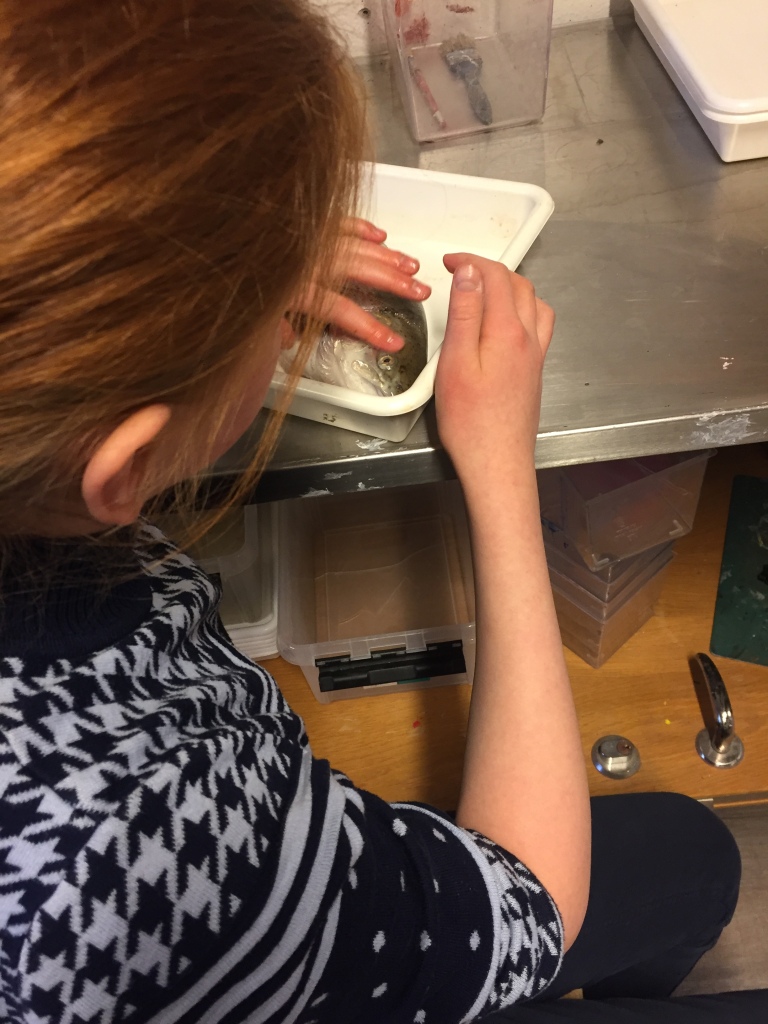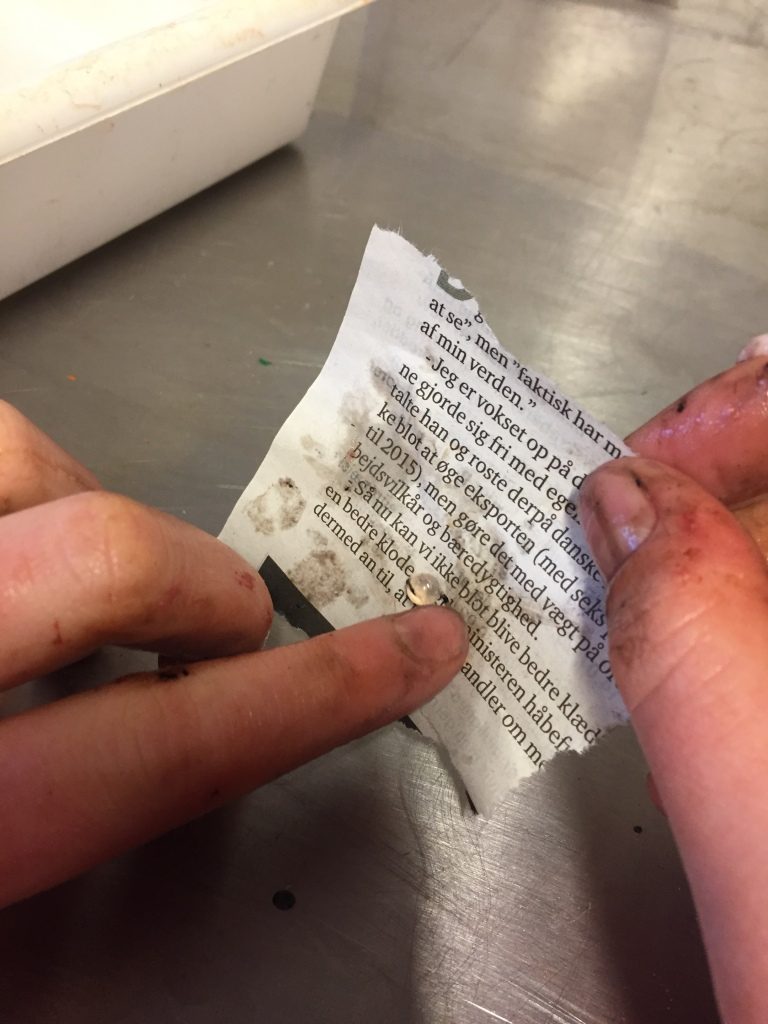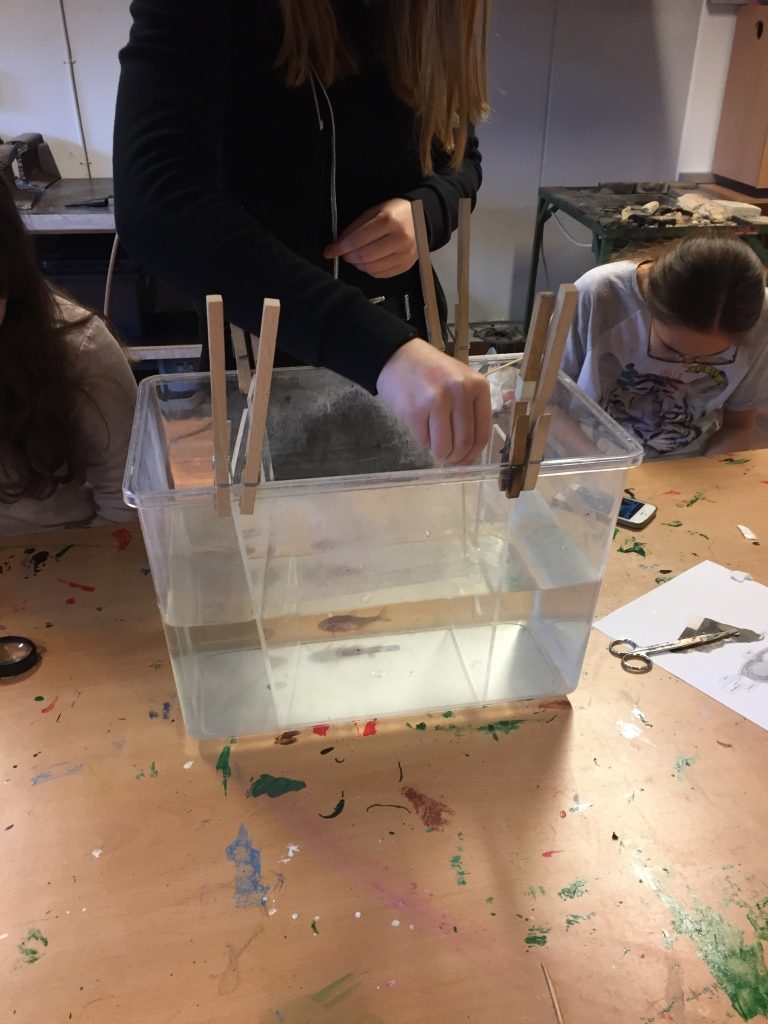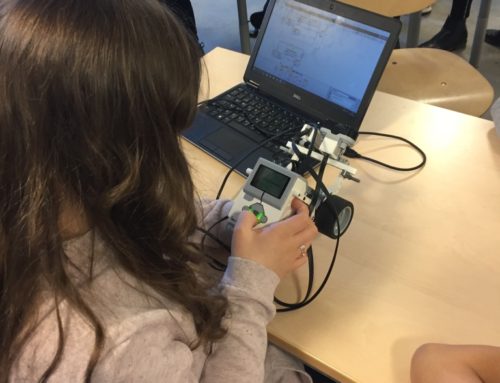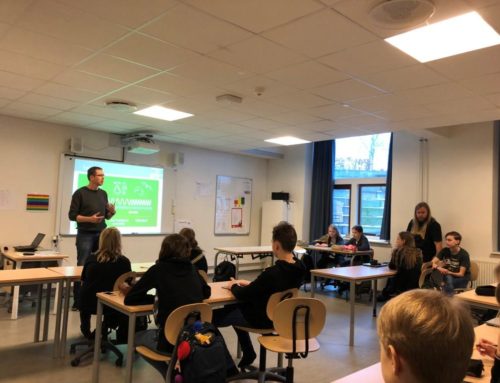Project Description
The day started with a short presentation of different super senses some animals have and short discussion with the students about the topic. We discussed for example how a hawk can see its prey from over 1 500 meters away and how elephants use hearing and microsounds to communicate with each other over long distances.
The lateral line system of the fishes is the key approach to senses during the day and it is examined from many different angles. A short lecture is given about the senses of fish before the students are paired together and each of the pairs receives a rainbow trout to examine. They first study it from the outside, before they start dissecting it. Many of the students were first terrified and slightly disgusted about the operation, but once they got the hang of it they immersed themselves completely to study the lateral line system, various organs, air bladder, gills and the eye. They easily find the lateral line system and study a clear pearl-shaped lens inside the eye, which also works as a tiny magnifying glass on e.g. piece of newspaper.
It’s hard to get the students to stop dissecting the fish, as we have agreed to skype with our Norwegian partner class. During the skype we tell the Norwegians about what we have done and give them a task to learn about lateral line system. Norwegian class tells us about a woman with super sensitive senses and asks us to find solution that help her cope with e.g. strong smells.
We continue to work with fist senses with another experiment that involves blind cave fishes. These fishes live in a constant darkness and thus their eyes have atrophied and like the name suggested they can’t see, but they can sense very clearly with the lateral line system. In this test a stick is waved in fast and steady movement few centimeters from the head of the fish. It senses the vibrations in the water and thinks that the stick is prey and it starts to follow it and its possible to lead the fist through a maze.
This test was difficult to conduct with the students as the fishes were agitated with all the feet stomping on the ground and pupils pushing against the table, so they couldn’t pay attention to the stick. But nonetheless, we managed to get the fishes follow the stick at least shortly. Taking them through the maze of plastic dividers unfortunately proved to be too challenging.
The students shot some material of the experiment and explained what happened in this test and why. They also came up with some questions and this video was send to Norway for them to work with.
The day ended with the class being divided into small groups and they studied super senses while trying to come up with creative solutions to the problems given by Norway. They could choose how they would present their finding: they could use e.g. drawings, video, presentations, sculptures, paintings and alike. Many of the students were interested to speculate and to imagine if one of their senses would change or become.
- Students are paired together and each of the pairs receives a rainbow trout to examine. They first study it from the outside, before they start dissecting it.
- Many of the students were first terrified and slightly disgusted about the operation, but once they got the hang of it they immersed themselves completely to study the lateral line system, various organs, air bladder, gills and the eye.
- They easily find the lateral line system and study a clear pearl-shaped lens inside the eye, which also works as a tiny magnifying glass on e.g. piece of newspaper.
- A stick is waved a few centimeters from the head of the fish. It senses the vibrations in the water and thinks that the stick is prey and starts to follow it. It is possible to lead the fish through a maze.

